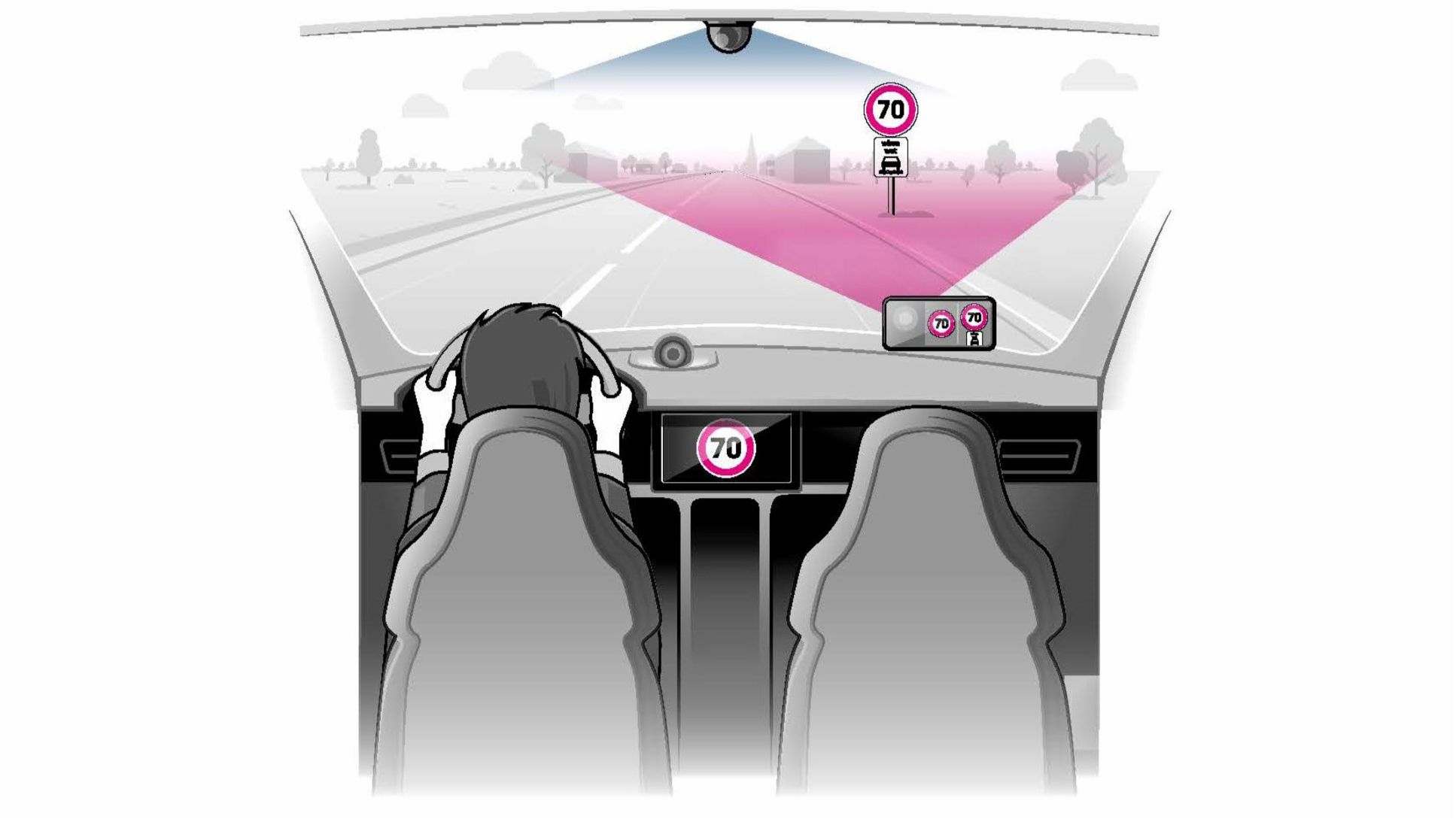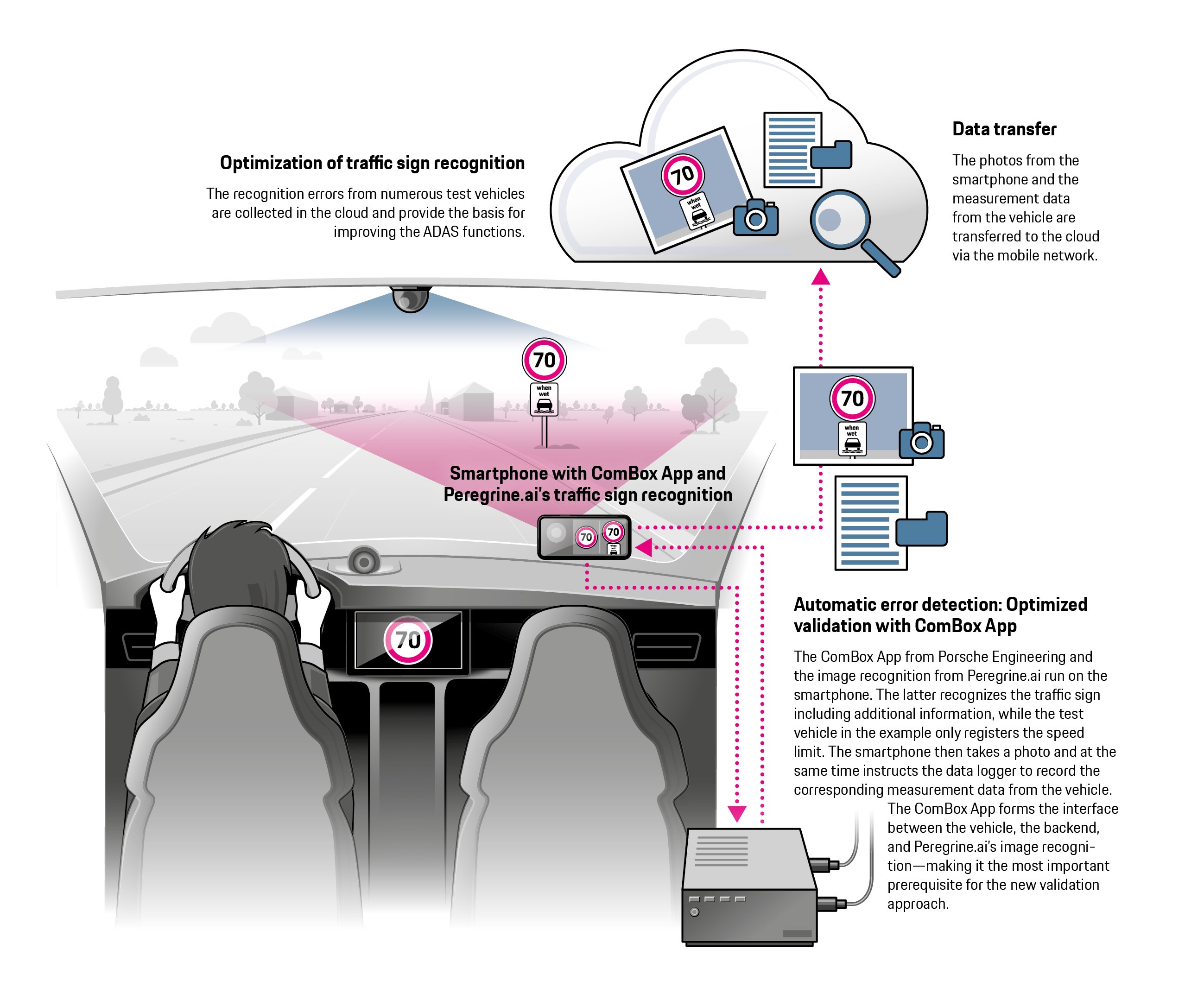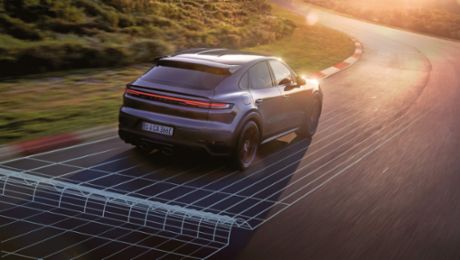For the validation of ADAS (Advanced Driver Assistance System) driving functions, developers need as much measurement data as possible from test drives—because this is the only way to ensure that the system has encountered many edge cases such as construction sites or rare traffic signs. But the measuring equipment for this is expensive, therefore making it cost-intensive to scale for large vehicle fleets. Validation is also generally associated with a large amount of work, as the example of traffic sign recognition shows: A developer in the passenger seat compares whether the ADAS system has correctly recognized a traffic sign during road tests.
Optimising traffic sign recognition
In the event of an error, they note the discrepancy manually. In addition, the corresponding measurement data from the vehicle is recorded on a hard drive. Porsche Engineering aims to reduce the manual work effort required for the validation of ADAS functions. To do so, it is employing smartphones equipped with software for traffic sign recognition from the Berlin-based start-up Peregrine.ai. While Porsche Engineering provides the interface to a data logger, the connection unit, and the camera hardware, Peregrine.ai integrates its AIpowered object detection. The idea behind it is that with each new traffic sign, the smartphone compares whether the vehicle and Peregrine.ai’s object detection provide the same result.
If there are discrepancies, the smartphone photographs the traffic sign and instructs the data logger to record the corresponding measurement data from the vehicle. Thanks to the ComBox App, Porsche Engineering can receive data from in-vehicle systems—the recorded measurement data can be loaded into the cloud and compared, which helps the ADAS engineers optimize the functions. The new method therefore not only eliminates the high manual work effort involved in the detection and description of the errors, but also enables the optimization of traffic sign recognition to be carried out cost-effectively by a larger number of test vehicles.
In the future, a smartphone on the windshield will be able to detect and record errors in all test vehicles—not just in those specifically designed for ADAS optimization. This will allow the developers to record more edge cases and thus improve the quality of the ADAS functions—especially in countries such as Australia with special traffic rules such as left-hand traffic and regional traffic signs, for which there is little data so far due to the small number of test vehicles. The new approach to validating traffic sign recognition has already been successfully tested during development of the new Porsche Macan and could soon be used in series development. It is also not limited to traffic sign recognition: In the future, further ADAS features will be optimized, including lane detection as well as the detection of traffic light phases and potholes.
Info
Text first published in Porsche Engineering Magazine, issue 2/2024.
Text: Christian Buck
Illustrations: Andrew Timmins
Copyright: All images, videos and audio files published in this article are subject to copyright. Reproduction in whole or in part is not permitted without the written consent of Dr. Ing. h.c. F. Porsche AG. Please contact newsroom@porsche.com for further information.






